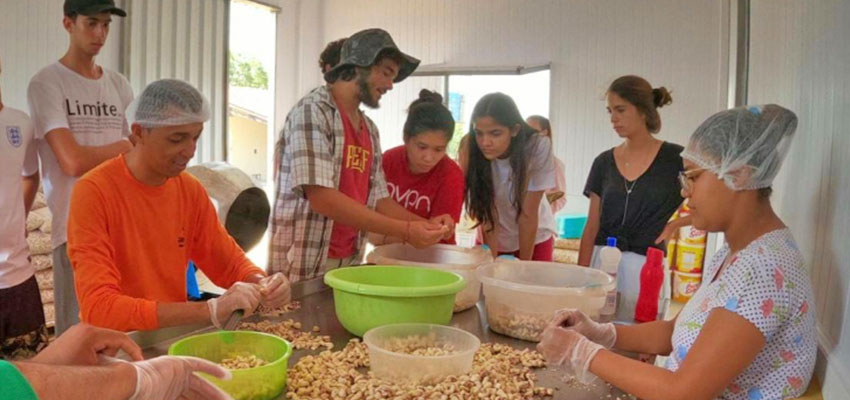
This January, as part of MIT’s Independent Activities Period (IAP), our team traveled to Canto do Buriti, Piaui, Brazil, to meet the people of Anjos do Sertão, a non-profit institute working to improve the plight of local farmers in the region. The four of us had taken the class D-Lab: Development together in the fall and were excited to gain some field experience. As the first MIT D-Lab team to work with this partner organization, we hoped to gain a clearer understanding of Anjos do Sertão, their goals and the challenges they face, so that future teams can build off our work to engage in more specific projects. The team is composed of Simran Pabla (MIT ’20), Muskaan Aggarwal (MIT ’20), Rhea Mehta (Wellesley ’20), Clarice Tan (Wellesley ‘22), together with our trip leaders Gabriel Filipe, Research Assistant at the MIT Computer Science and Artificial Intelligence Lab (C-SAIL) and Insper ProfessorJuliana Miranda Mitkiewicz, a former visiting PhD student at D-Lab.
Getting to the farm at Canto do Buriti was perhaps our strongest bonding experience. We had all flown into Boston that very weekend from California, Singapore, and New Delhi, and it would take us three additional flights and a seven-hour bus ride in a country where we didn't speak the language. We flew from Boston to Miami to Brasilia to Teresina and then boarded our bus to Canto do Buriti. We reached the farm around 10:30 PM after a tiring, sleep-deprived journey and were welcomed with warm smiles, hugs, and pasta!
After our quick dinner, we walked to our house, a two-bedroom, seven-bed house built near the entrance of the farm. We shared the house with three other women, an agroforestry consultant and two high school students. Finally, our much-awaited moment arrived - we turned off the light and hit the bed!

We were excited, energetic, and curious about what our coming days would entail. We are living on the farm with Tatiana Fonseca and Helmut Fladt (owners of the farm and Anjos do Sertão), their three sons, five high school students from Sao Paulo, and several farmers who work here. Over the course of these first two weeks, we had the opportunity to learn a lot about Anjos do Sertão, the community members, the farmworkers, agroforestry, and cashew and honey production.
About Anjos do Sertão
On our official first day, we interviewed Helmut and Tatiana and learned more about Anjos do Sertão, the community partner we are working with. Anjos do Sertão is a for-profit company, focusing primarily on cashew and honey production. Currently, they have 300 hectares of cashew plantation and three sites of honey production.
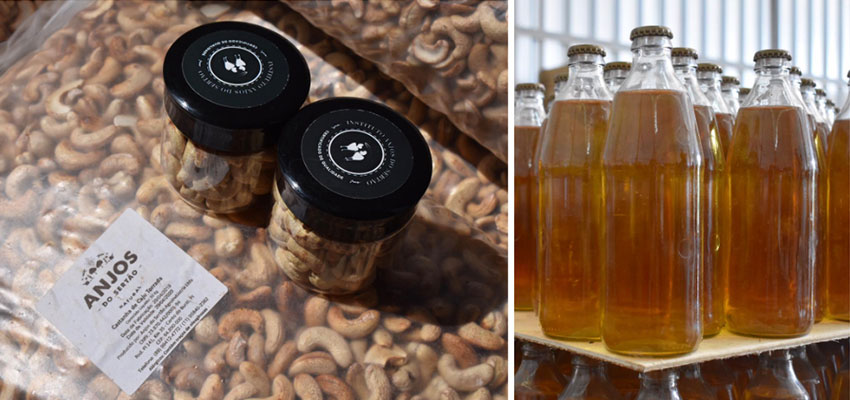
Five years ago, they founded the Anjos do Sertão Institute, a nonprofit enterprise aimed at uplifting the lives of surrounding communities. They hope to do so by forming partnerships with local communities, through which an exchange of knowledge can take place and collective strategies can be formed to increase local people's income and quality of life. One way to do this is by reducing the burden that middlemen place on local producers. On average, the produce moves between three to four intermediaries, each claiming a significant portion of the profit. We learned that producers in Piaui usually sell 1kg of cashew nuts for around USD $0.80, but that the final consumers in cities like São Paulo purchase 1kg for around USD $40. The Institute hopes to increase farmer income by purchasing cashew nuts directly from producers at a fair price and selling them directly to consumers, thus improving the share of profit that the producers receive. Additionally, the Institute can provide resources and bring in agriculture experts to work with local farmers to plant the crops they want in the most effective way possible. The Northeast is one of the poorest regions of Brazil, and many small farmers lack formal training in agriculture, resources, and technologies to maximize their harvest and profits.
In speaking with Tatiana and Helmut, we understood that another challenge is a general unwillingness among people in this region to work with them and try new methods, which may be quite different than traditional methods of farming. Additionally, the youth in the region are uninterested in working in agriculture, in part because the returns have been poor for their families. Another goal of the Institute is thus to reignite in young people a connection to their native land and empower them to take initiative in working with agriculture.
We’ve since sought to gain a better understanding of the challenges the Institute and the people in the region face, with the hope of helping to conceptualize more concrete ways in which the Institute can work to achieve its goals.
Agroforestry training
The Institute sees agroforestry as an opportunity to work towards its goals and benefit communities in the region. In an effort to expose us to this agroforestry initiative, our community partners immersed us in ongoing work at the farm right away. On our second day, we joined a four-day agroforestry training arranged for the workers. It was run by an external agroforestry expert who has worked extensively with settlements in other parts of Brazil and internationally to implement agroforestry practices with great success. The training began with a conceptual exploration of agroforestry and culminated in practical exposure in the nearby fields.
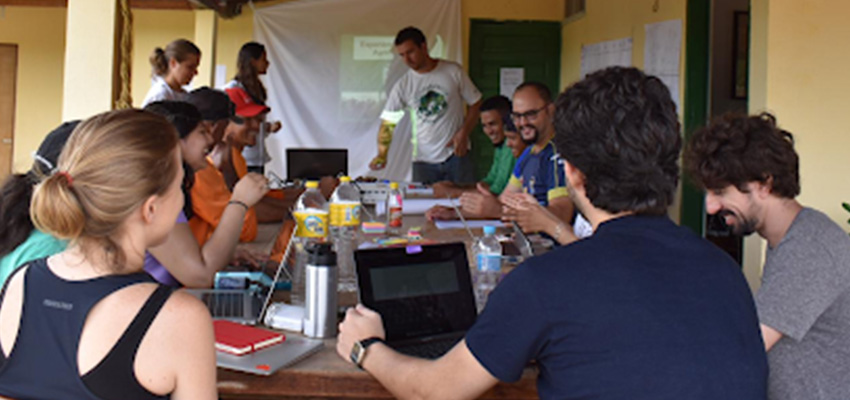
We often define agroforestry in a systematic way: growing species in a spatial arrangement of coexistence, thus boosting biodiversity, soil conditions, and overall environmental health. Coming into the training with these formulated definitions, we were fascinated to hear the trainers define the core philosophy of agroforestry as developing a deeper connection with nature and mimicking its growth patterns. They explained how monoculture farming — the current, widespread system of growing single-crop fields — has industrialized agriculture, negatively impacted the environment, and disrupted the valuable connection between humans and the natural world. Agroforestry can regenerate biodiversity and promote the coexistence of these species. In coexisting, they can supplement one another’s needs, such as providing shade and various nutrients. Furthermore, the diversity of crops and revenue streams protects farmers from the financial risk of investing in only one crop and provides them with year-round income.
As the four of us sat in the training, we all were taken aback by the complexities of agriculture and agroforestry in particular. Many decisions that we would have previously considered trivial or arbitrary proved to be crucial to yield and success. Choosing the correct crops to plant together and regenerating land to support growth requires deliberate strategy, and we could see the positive impact of the back-and-forth discussion that the trainers and local workers were having regarding optimal strategies.
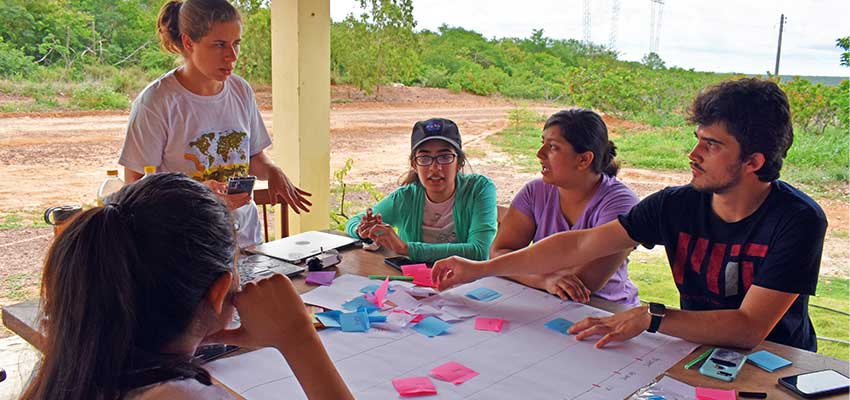
After discussing concepts and strategies and working through some short exercises, we had the opportunity to accompany the workers and practice implementing agroforestry techniques on a small plot of land on the farm. The trainers and farm owners had collectively selected crops to plant, and we ran through all the necessary steps for effectively planting these crops in accordance with our learnings from the training. From clearing the field and generating organic material to planting the crops with ancestral planting techniques in mind, we converted the land into a productive space that will hopefully serve as a proof of concept for future experiments with agroforestry on the farm and within the community.


Along with learning about agroforestry, and cashew and honey production, we have been spending a lot of time understanding neighboring communities and how the Institute could work with them. We began by interviewing members on the farm (managers, workers, and agricultural consultants hired by the farm) to understand their view of the farm’s relationship with its community, and more recently, we’ve begun to interact with other local producers and communities to hear about challenges they face and observe how the Institute can help them. We also got the opportunity to interview the Mayor and Secretary of Education of Canto do Buriti. Listening to personal stories of these community members and observing their interactions with members of the Institute was a rewarding experience, and we’ve left each conversation feeling more curious and motivated.
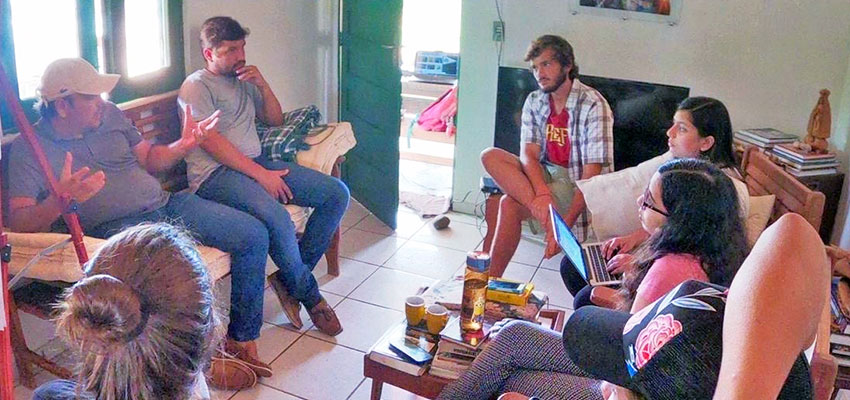
It’s not all work! Our trip to Serra da Capivara
After two weeks of intensive interviewing, long training, and fieldwork, we took a three-day visit to the Serra da Capivara National Park. Serra da Capivara is not only very beautiful but the area also holds the largest and most extensive concentration of rock paintings and prehistoric sites in the Americas. Additionally, we also got the chance to visit two museums - Museu do Homem Americano and Museu da Natureza. This was the first time we stepped out of the farm and got to see what a bit more of Brazil. In a mini bus, the 11 of us drove past small markets, large farms, and local communities and houses.
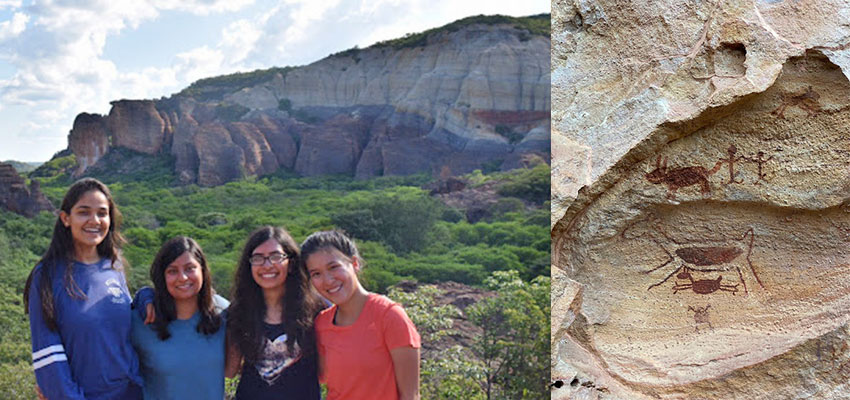
The people and the food
Our experience so far has been influenced largely by the people we have been around, our hosts, their family, and the people we are staying with. Every conversation we have had with local people, be it other farmers, workers or our tour guides at Serra da Capivara, has required translation. Everyone here has done more than their fair share to make us feel comfortable and make our experience in Brazil good. We all spend almost all our time together and eat our 3 meals at the farm’s cantina. Brazilian food is simple and healthy and fresh juice is a staple with nearly every meal. For breakfast we eat fruit, avocado, cake and tapioca (a local dish of the north-eastern region made with tapioca flour and cheese), lunch is nearly always rice, beans and meat, dinner varies - pasta, pizza, salad, rice and beans, or something else. We have tried and loved local fruits and vegetables such as caja, cassava (yucca), maxixe (gherkin) and cajuina (a local drink made with the fruit of cashew) . The best part has got to be Brazilians’ love for cake!
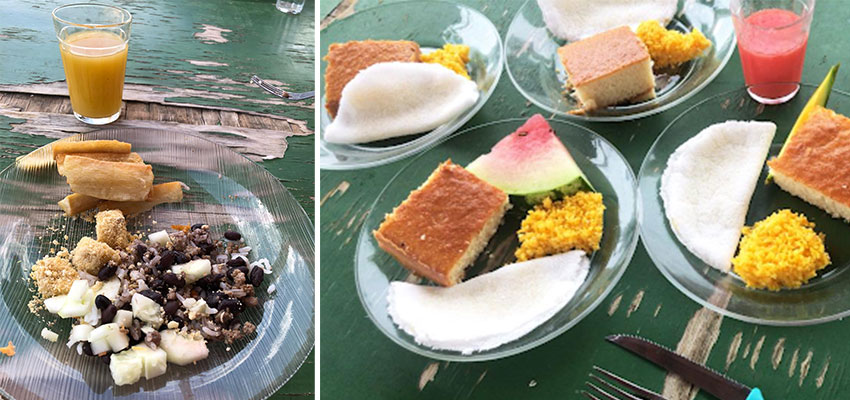
Looking ahead
As we look ahead to our remaining time here, we hope to build on our work so far by outlining next steps for the Institute to cultivate partnerships with the communities we visited and others interested in collaborating. For communities that are still skeptical or hesitant, we hope to be able to better understand why they are skeptical and how the Institute can bridge that gap. Having said that, we are cognizant of the fact that cultivating relationships and building trust are subtle processes that require time and a lot of work. Another area we hope to explore further is that of youth engagement and empowerment. This is one of the primary goals of the Institute, but in our community visits and interviews thus far, we have not quite heard the youth perspective. Going forward, we hope to be able to understand their side of the story more. On a lighter note, we hope to immerse ourselves more deeply in Brazilian culture, try more local food, learn some Brazilian songs and have fun with our new friends here!
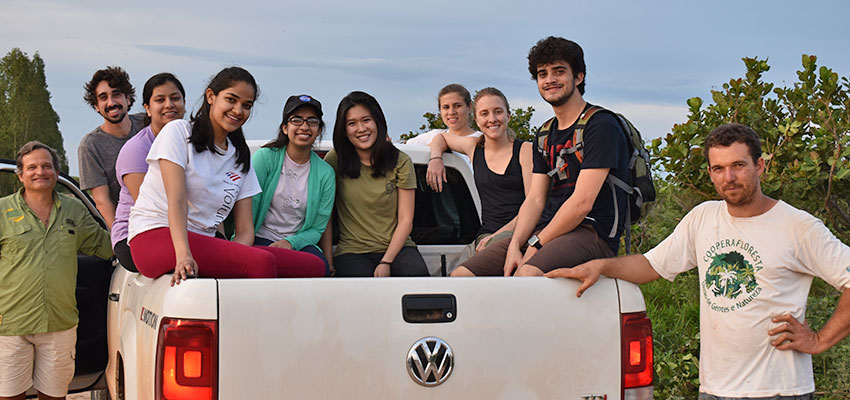
About the authors
Simran Pabla ‘20 is a senior at MIT studying Computer Science. She is interested in artificial intelligence and its applications in aerospace, urban development, and healthcare sectors.
Clarice Tan ‘22 is a sophomore at Wellesley College studying Political Science and Computer Science. She is interested in environmental issues and particularly the potential of local bottom-up ventures to inspire climate action.
Rhea Mehta ‘20 is a senior at Wellesley College studying Economics. She is a Fellow of the Madeleine Korbel Albright Institute and is interested in the economics of the healthcare sector.

